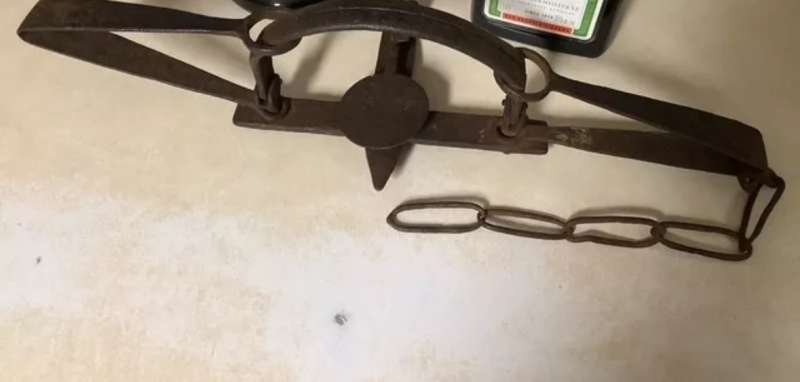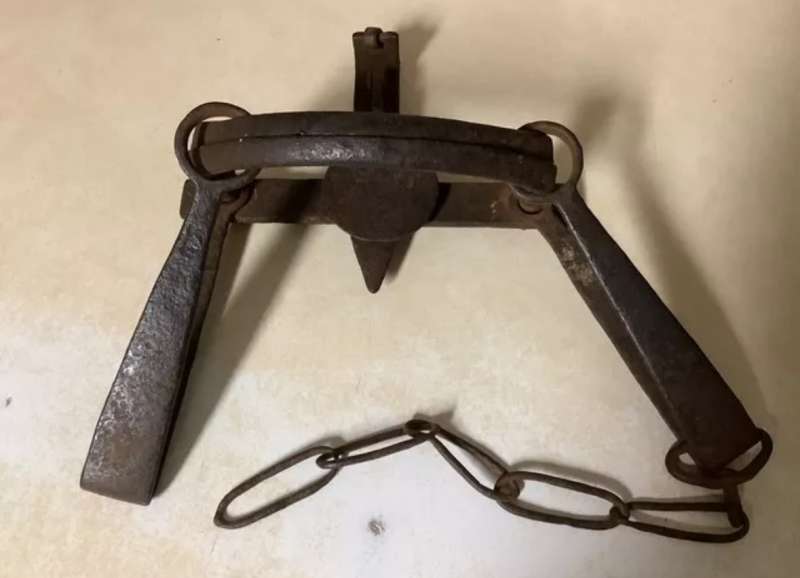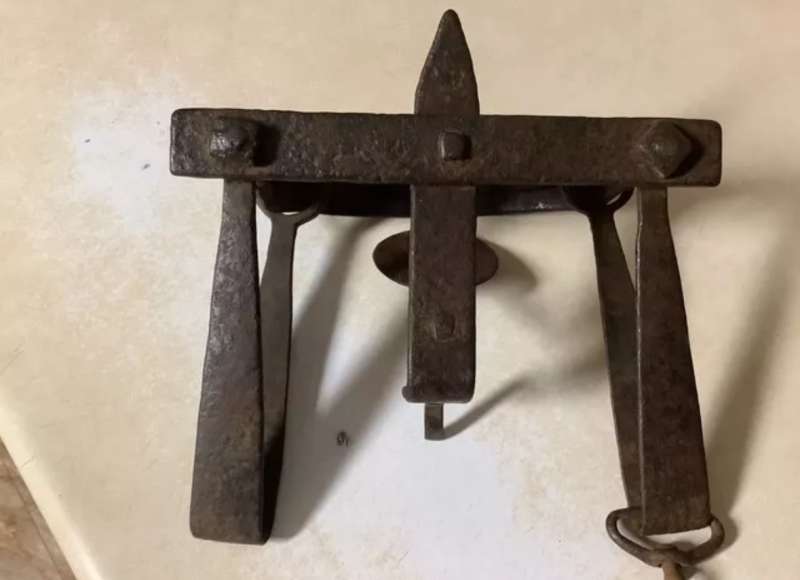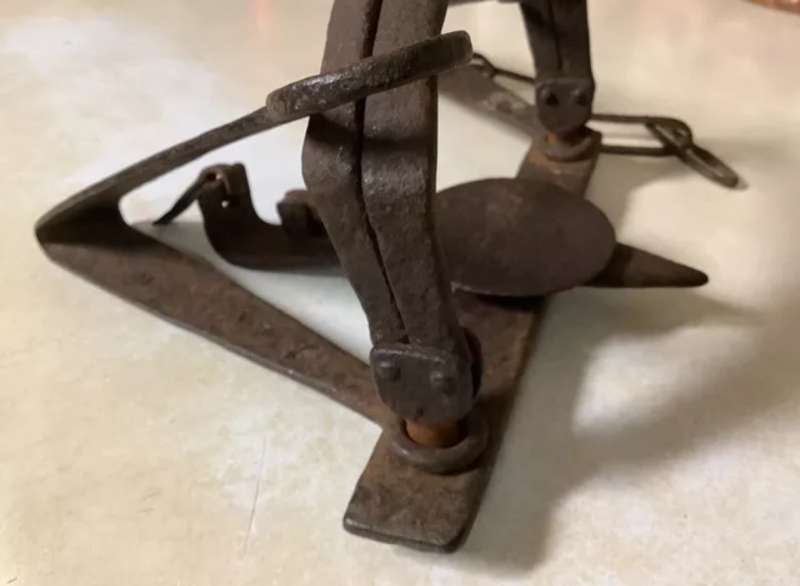Hello MountainmanMatt,
Yes, I am still here. I have just been busy cleaning up after some flooding that we had here on the ranch a few weeks ago.
Your trap may very well be a Newhouse, but it can be difficult to tell for sure. There are a lot of small details to look at, and there are some variation of some of those depending on if it were an early slick pan or a latter slick pan Newhouse. The spring stamping on Newhouse slick pans is quite small on the earlier ones and may not be visible if the spring is pitted. The pan post is the post that the pan is riveted to, and on the slick pan should be V shaped, made from a piece of flat steel that was folded in half, not U shaped. The V shape is forged and the U shaped is cast. Look for the casting marks on the underside of the jaws. These marks can be in different places on traps that are of different ages, or different manufactures. The point on the cross can also be a distinctive feature in determining age and maker. The jaw posts look correct for an early Newhouse, they should have rounded corners as apposed to a flat top with square corners like on latter Newhouse. The jaw posts on Hart traps tend to be taller than on Newhouse, and Hart jaws tend to have wide shoulders to prevent the spring eyes from ridding up. The jaw swells that prevent spring ride up can wear down over time, and these jaws do look rather narrow. It is difficult to tell from the photos if both of these springs are original. In one photo, the spring without the chain looks to be shorter than the other, In the photo of the bottom of the trap, the springs look to be the same length. If the springs are original, the should be very much alike. The chain looks to be all forged links, that would indicate an earlier trap that originally had 10 links. Most slick pan Newhouse traps will have an 11 link chain, every other link forged and every other link cast. A lot of early traps came without a chain, only having a swivel and the trapper would attach a chain of his own. It is common for collectors to assume that a trap like this is a Newhouse, but there were numerus other trap manufactures that made traps intentionally to look like a Newhouse. Newhouse traps were desirable and other trap makers were trying to compete in the market. some advertising and some even marking their traps as Oneida pattern.
Here are some photos of a #4 Newhouse slick pan for comparison. Notice on the bottom of this trap, there is a stamp, "BBH and a crown", this is the mark of an English steel manufacture, Bradly, Barrows and Hall. This mark is like "ROME" on latter traps. I also have a #4 Hart trap with the same stamp.
![[Linked Image]](https://trapperman.com/forum/attachments/usergals/2025/04/full-25601-254277-20250406_225128.jpg)
![[Linked Image]](https://trapperman.com/forum/attachments/usergals/2025/04/full-25601-254278-20250406_225330.jpg)
![[Linked Image]](https://trapperman.com/forum/attachments/usergals/2025/04/full-25601-254279-20250406_225431.jpg)
![[Linked Image]](https://trapperman.com/forum/attachments/usergals/2025/04/full-25601-254280-20250406_225611.jpg)
![[Linked Image]](https://trapperman.com/forum/attachments/usergals/2025/04/full-25601-254281-20250406_225359.jpg)
![[Linked Image]](https://trapperman.com/forum/attachments/usergals/2025/04/full-25601-254282-20250406_225415.jpg)







![[Linked Image]](https://trapperman.com/forum/attachments/usergals/2025/04/full-25601-254277-20250406_225128.jpg)
![[Linked Image]](https://trapperman.com/forum/attachments/usergals/2025/04/full-25601-254278-20250406_225330.jpg)
![[Linked Image]](https://trapperman.com/forum/attachments/usergals/2025/04/full-25601-254279-20250406_225431.jpg)
![[Linked Image]](https://trapperman.com/forum/attachments/usergals/2025/04/full-25601-254280-20250406_225611.jpg)
![[Linked Image]](https://trapperman.com/forum/attachments/usergals/2025/04/full-25601-254281-20250406_225359.jpg)
![[Linked Image]](https://trapperman.com/forum/attachments/usergals/2025/04/full-25601-254282-20250406_225415.jpg)